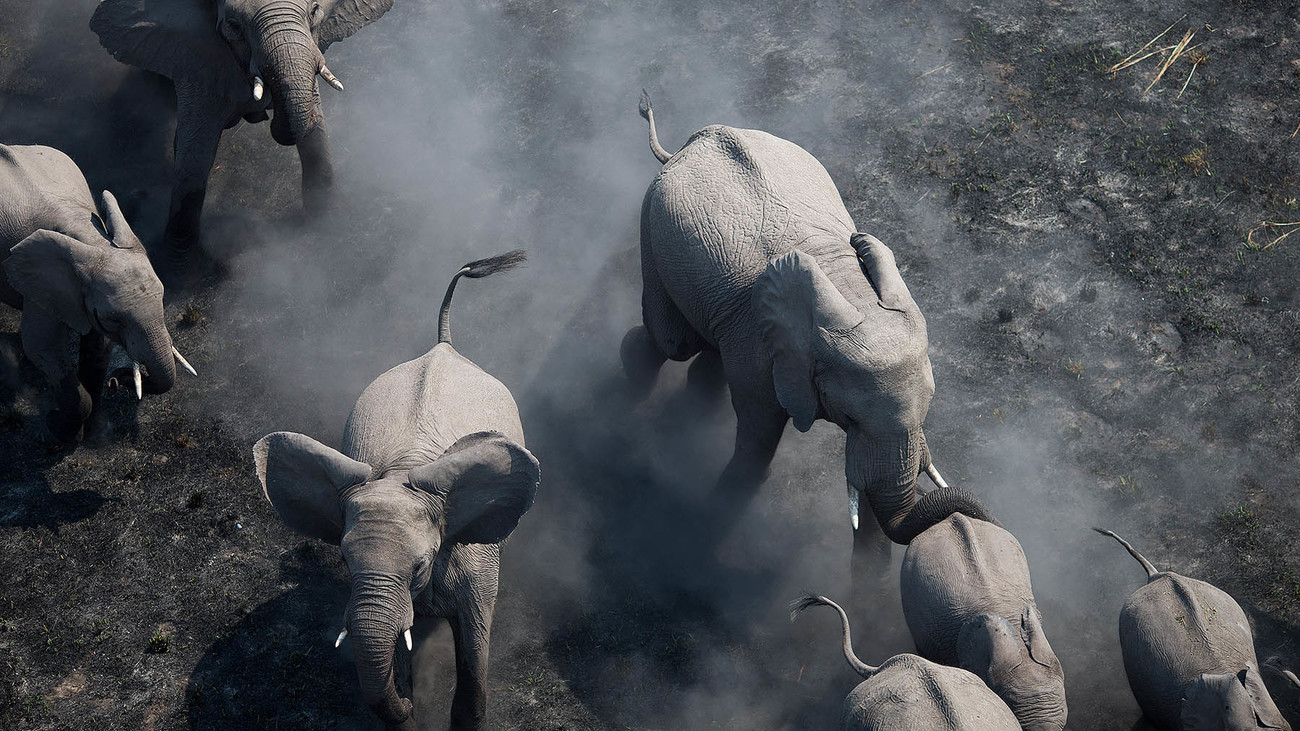nature at the heart of climate action
nature at the heart of climate action
I’m traveling to the UN Climate Change Conference (COP26) in Glasgow today with a mixture of hope and trepidation. It’s the site of what’s sure to be one of the most important climate conferences since the 2015 Paris Agreement was signed. This week, governments will be defining their contributions to reducing greenhouse gas emissions and adapting to a warming planet—and IFAW will be advocating for far greater focus on investing in nature as a core tool to combat climate change.

The Paris Agreement represented a major breakthrough in climate action, providing a framework for all nations to play their part. But its success is dependent on countries raising their ambition over time. And that ambition is still lacking. A recent UN analysis of government commitments to date shows that despite progress, we’re still heading for warming of 2.7 degrees by the end of the century, with emissions set to be 16% higher in 2030 than 2010, when what’s needed to limit warming to 1.5 degrees is a 45% reduction.
That’s the trepidation. So why am I hopeful? I’m hopeful because increasingly it is clear that we can achieve this. Shifts to renewable energy, cleaner transport, nature conservation and changes in production and consumption patterns are already happening across the globe. What’s lacking is the political will to scale up the size and speed of these interventions, and to provide the resources to do it. Back in 2009, developed countries pledged to provide USD$100 billion in climate finance a year by 2020. That target has not been met and it will be a major test of COP26 for countries to pay forward the long-promised cash to assist the world in our transition to carbon neutrality.

Save animals, save our planet
One of the best places to invest that money is in nature conservation. Nature, and the animals and species that form part of it, are one of our greatest allies in tackling climate change. As an an organisation committed to protecting animals and the places they call home, we at IFAW instinctively understand that nature offers some of the best and most cost-effective solutions to mitigating and adapting to climate change.Nature loss and climate change are two-sides of the same coin. We cannot tackle one crisis without tackling the other. And if we tackle them together, we increase our chances of success on both.
Climate change is having a dramatic impact on animals and people alike. It exacerbates the threats facing many species. Some have already gone extinct due to climate change and many more will follow, with as many as a third of animal species facing extinction as a result of climate change unless action is taken.
Yet studies show nature conservation can provide approximately a third of the carbon mitigation needed to meet the Paris Agreement. Many ecosystems that are the most effective at capturing and storing carbon are also important habitats for wildlife. Some animals, such as forest elephants, pangolins and whales, are ‘ecosystem engineers’ – with key roles in preserving the health of these ecosystems and enabling the capture of more carbon.
In addition, natural solutions also offer some of the best means of adapting to climate change. For example, mangroves mitigate storm damage, wetlands prevent flooding, forests prevent soil erosion. Conserving nature protects people, while also protecting homes for animals. Promoting and implementing nature-based solutions is central to IFAW’s contribution to preventing and adapting to climate change. We see beneficial ways in which we can conserve nature and offer examples that can be replicated at a larger scale to tackle the climate crisis.
Our work at IFAW helps mitigate climate change and helps animals and people alike adapt to its consequences in a number of ways:
- Protecting animals in secure and connected habitats around the world helps ensure these natural habitats are not lost to other potentially damaging and carbon-intensive uses. It also allows animals to move in response to changing climatic conditions. Restoring degraded habitats and species populations increases their potential to capture and sequester carbon.
- Working with local communities to promote wildlife-friendly livelihoods avoids damaging economic activities while helping people thrive. Where animals migrate in response to changing climate and encounter people in a negative manner, our work with communities helps reduce conflict, making space for animals and people.
- Rescuing animals in crisis due to climate-related disasters helps communities adapt to climate change. Where changes in weather patterns increase the risk of extreme events, IFAW works to reduce risks to animals and people, and helps communities prepare for and respond to climate-induced disasters.
- Advocating to policy makers to conserve nature and invest in nature conservation as part of their climate policies, alongside substantial greenhouse gas emission reductions.
As hosts of COP26, the UK government has pledged to make this the “nature” COP. As I head to Glasgow, I’ll be keeping a close eye on the outcomes of COP26 to judge if that’s really the case. It needs governments put nature conservation, on land and at sea, at the centre of their national plans. It needs rich countries to finally provide the money they’ve pledged, in order to help some of the most biodiversity-rich yet economically poor nations on earth fight climate change. And it needs significantly more of that money to go towards nature conservation.
At IFAW, we’re putting nature at the heart of everything we do to combat climate change. Nature and animals are doing their part. It’s time we all did ours.
-Matt Collis, IFAW Deputy Vice President, Conservation
Related content
Every problem has a solution, every solution needs support.
The problems we face are urgent, complicated, and resistant to change. Real solutions demand creativity, hard work, and involvement from people like you.